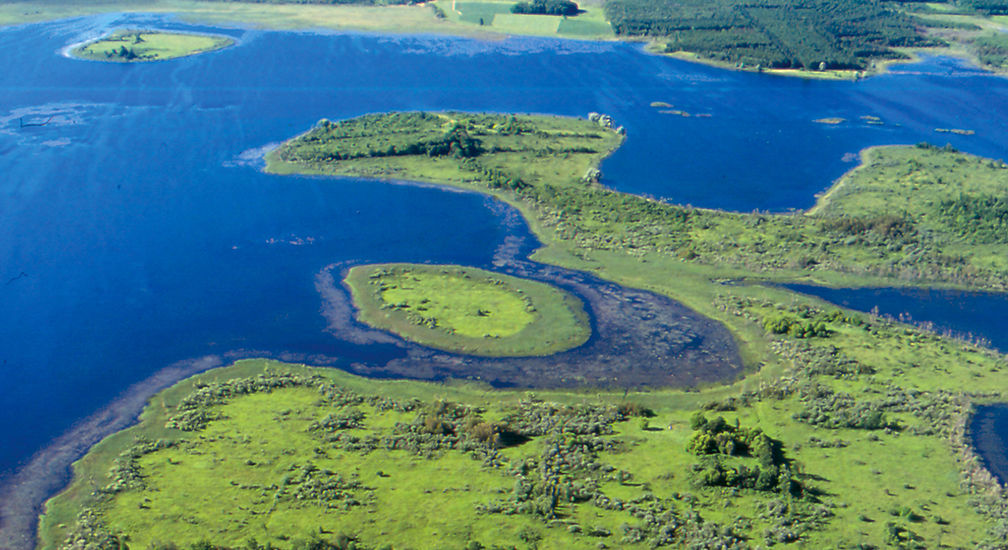Ontario Nature Blog
Receive email alerts about breaking conservation
and environmental news.
© Lora Denis
Dickcissel © Patti McNeal
When I think “bird-watching paradise,” Ontario isn’t exactly what comes to mind. I think more along the lines of Ecuador, Madagascar, Panama, Indonesia, South Africa or Texas. Perhaps I fantasize about those places because they’re so remote and I haven’t been to any of them. I wonder why we find it easier to dream of mythical locales than to explore our immediate surroundings. Often what we’re searching for is closer than we think.
I went to Luther Marsh earlier this month in search of a rather rare grassland bird curiously and memorably named dickcissel (Spiza Americana). Luther Marsh, one of southern Ontario’s most significant wetlands, is located at the headwaters of the Grand River. This enormous area contains numerous bird sanctuaries, two short, family-friendly hiking trails and a longer bike route. Created in the 1950s, the Luther Marsh immediately attracted waterfowl, marsh and grassland birds. Some inhabit the area year-round while others use it as a stop-over during migration.

Given its low-water level, size and location, Luther Marsh also attracts rarities. This year, when a dickcissel visited the marsh, my bird group set-off in search of it. (For those of you wondering, “dickcissel” is echoic, meant to evoke the male’s song which sounds like a chirping dick dick followed by a buzzing cissel ciss ciss.)
The dickcissel is a sparrow-like grassland bird that breeds in the Midwest plains south of the border. During this rare southern Ontario appearance, I saw not one but two dickcissels in Luther Marsh. First I glimpsed them feeding in the cedars, along with various grassland sparrows. Then I caught sight of the birds singing to one another. I struggled to detect the male’s “dick-cissel” call amidst the pair’s nasal trilling, but I’m not yet a first-rate aural birder.
What I did get were phenomenal views of the bird’s neck with a shiny black V on a yellow chest-patch. I also admired the distinctive yellow stripe above the bird’s eyes. The rest of the bird is, alas, unremarkable in its brownish and greyish hues.
The day also included fantastic views of bobolinks, eastern kingfisher and song and savannah sparrows. In addition, I was entertained by riotous crows harassing a nesting raptor and a territorial dispute between two aggravated sandhill cranes. On our way back home, my group stopped at Forks of the Credit– another underrated birding hotspot – and was immediately greeted by a singing indigo bunting in the parking lot and a show-stopping orchard oriole.
A thrilling birding experience so close to home.

Proposed 413 Route, Old School Road with farm and escarpment view © Noah Cole
I would love to see a dickcissel — alive that is. The only ones I’ve seen were very dead, washed up on the Texas coast, probably overcome by a storm on their long spring journey crossing the Gulf of Mexico. Though relatively abundant in the core of their breeding range on the American prairie, dicksissels have a rough time in their main wintering area. They concentrate in a small area of Venezuela which happens to be a chief rice-growing area. Considered an agricultural pest, farmers do their best to get rid of them.
It’s a great bird to see! I had no idea about their problematic wintering in Venezuela. Early June in Luther Marsh is often a good time to see them alive and thriving!